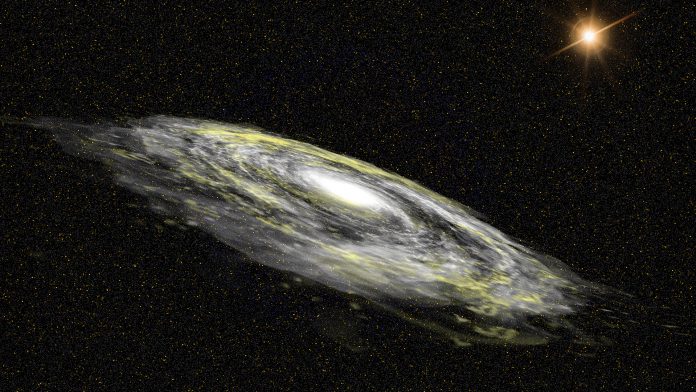An international team of researchers has found that the black hole at the centre of our galaxy, Sagittarius A*, not only flares irregularly from day to day but also in the long term.
The team, led by Alexis Andrés, analysed data collected over fifteen years to conclude that Sagittarius A* is unpredictable and chaotic. Andrés initiated this research in 2019 as a summer student at the University of Amsterdam and continued it over the past several years. Now, his research is to be published in Monthly Notices of the Royal Astronomical Society.
Sagittarius A*
The black hole is a strong source of radio, X-rays and gamma rays, whereby visible light is blocked by intervening gas and dust. Astronomers have been aware for decades that Sagittarius A* flashes daily, emitting bursts of radiation that are 10 to 100 times brighter than signals typically observed from the black hole.
The researchers searched for patterns to learn more about the mysterious flares by observing the fifteen years’ worth of data made available by NASA’s Neil Gehrels Swift Observatory, which is an Earth-orbiting satellite dedicated to the detection of gamma-ray bursts.
The Swift Observatory has been observing gamma rays from Sagittarius A* since 2006, and analysis of this accumulated data showed high levels of activity spanning from 2006 to 2008, with a sharp decline emerging over the next four years. After 2012, the flares increased once again, making it difficult for the research team to establish a distinguishing pattern.
Dr Nathalie Degenaar, co-author from the University of Amsterdam commented: “The long dataset of the Swift observatory did not just happen by accident. Since then, I’ve been applying for more observing time regularly. It’s a very special observing programme that allows us to conduct a lot of research.”
Future research
Over the next few years, Andrés and his research team expect to gather enough data to establish whether the variations in the flares from Sagittarius A* are due to passing gaseous clouds or stars, or whether something else can explain the irregular activity and accumulated data gathered regarding the Milky Way’s central black hole.
“How the flares occur exactly remains unclear. It was previously thought that more flares follow after gaseous clouds or stars pass by the black hole, but there is no evidence for that yet. And we cannot yet confirm the hypothesis that the magnetic properties of the surrounding gas play a role either,” concluded Dr Jakob Van Den Eijnden, co-author from the University of Oxford.









